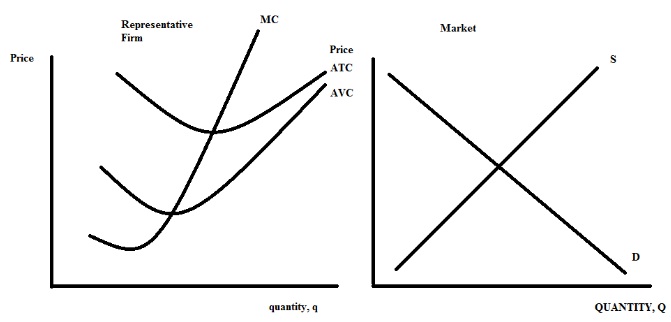Problem 1. The following two graphs represent a perfectly competitive market.

a. In the above graph label the initial equilibrium price, P1, and equilibrium quantity, Q1, in the market.
b. In the above graph draw and label the firm's initial marginal revenue curve, MR1. Identify the firm's short-run profit-maximizing quantity, q1.
c. In the short-run, this firm makes ___________ economic profits.
d. In the long run, there will be ___________ of firms.
e. Relative to the initial short-run equilibrium, in the long run:
i. The profit maximizing quantity for the firm will __________.
ii. The price in the market will ___________.
iii. The quantity in the market will __________.
Problem 2. Consider a monopoly that can be described by the following demand curve:
P = 200 – 2Q
You are also told that the equations for MC and TC for this monopoly are given as:
MC = marginal cost = 20 + 2Q
TC = total cost = 20Q + Q2 + 100
a. What is the firm's marginal revenue (MR) equation given the above information?
MR = ______
b. Identify the profit maximizing quantity and price for this monopolist if it acts as a single price monopolist? Show your work for full credit.
Profit-maximizing quantity = _______
Profit-maximizing price = ______
c. Calculate the value of the monopoly's profit.
Show how you found your answer.
Monopoly's profit = ______
d. Calculate the value of consumer surplus (CS), producer surplus (PS), and deadweight loss (DWL) for this single price monopolist. Show your work.
CS = __________
PS = ___________
DWL = __________